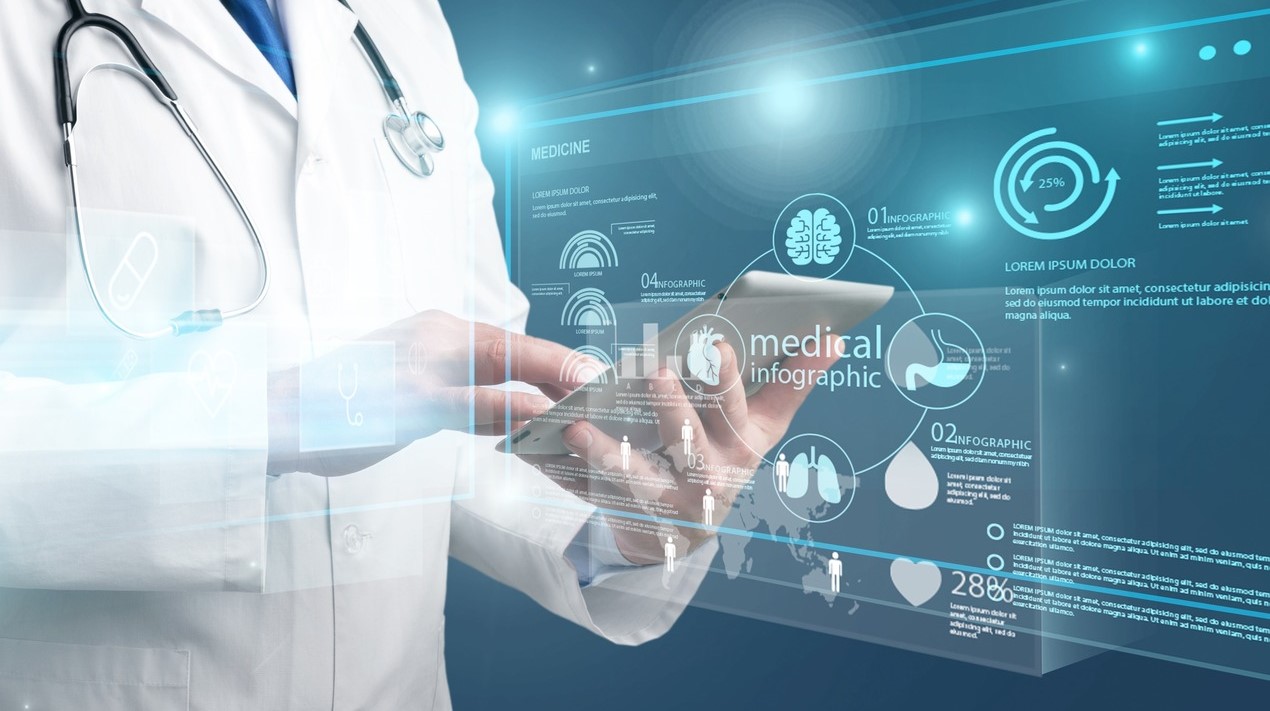
This article has been written by Peter Moore, Regional Managing Director, Asia Pacific and Japan Public Sector, Amazon Web Services
2020 was a year like no other. By March, COVID-19 had spread around the world impacting families, businesses, and communities. And, one year later, many are still fighting the spread of the virus, which has since introduced several new variants that are threatening our communities. The speed at which the virus spread left diagnostics for the disease lagging and the healthcare community looking for new ways to use technology to help.
As countries grappled with the challenge of scaling COVID-19 testing, we launched the Amazon Web Services (AWS) Diagnostic Development Initiative to help organizations around the world apply the power of the cloud to accelerate diagnostics research and development. Through this initiative, AWS committed $20 million in computing credits and customized expertise from the AWS Professional Services team to support customers using AWS to drive diagnostic innovations.
In the first phase of the initiative, AWS has helped 87 organizations in 17 countries ranging from startups, nonprofits, research institutions, and businesses. We have awarded $8 million supporting a range of diagnostic projects including molecular tests for antibodies, antigens, and nucleic acids; diagnostic imaging; wearables; and data analytics tools that use artificial intelligence and machine learning to detect the virus.
As we launch the next phase, we are excited to broaden the AWS Diagnostic Development Initiative’s scope and distribute the remaining $12 million this year. From 12 April 2021, we are expanding the scope to three new areas: 1) early disease detection to identify outbreaks at the individual and at the community level, 2) prognosis to better understand disease trajectory, and 3) public health genomics to bolster viral genome sequencing worldwide. While AWS will prioritize COVID-19 projects, we will also evaluate projects focused on other infectious diseases. We will accept applications through the end of the year, with priority consideration given to applications received before July 31. Interested organizations can apply here.
AWS has seen transformative innovations in how startups and organizations diagnose disease over the past year, from machine learning-powered X-ray imagery analysis to new developments in rapid, high quality, and direct-to-consumer tests. These changes will continue to evolve and improve a country’s ability to respond to future outbreaks.
Speeding customer innovation
The AWS Diagnostic Development Initiative has accelerated projects that are changing what is possible with medical diagnostics and having an immediate impact on COVID-19 detection. These projects are not only enabling the medical community to rapidly respond to COVID-19, but also have implications for many other infectious diseases. Here are some examples of the projects funded by the AWS Diagnostic Development Initiative:
Medo uses Artificial Intelligence (AI) to help healthcare professionals quickly identify severe COVID-19 cases
Medo is an AI healthcare startup founded in Singapore and headquartered in Edmonton, Canada, that leveraged support from the AWS Diagnostic Development Initiative to expedite the development of its Medo Lung solution. Medo Lung would allow a quick ultrasound scan of the lung to be reviewed by an AI algorithm to detect whether a patient has normal lung function or is suffering from complications such as interstitial pneumonitis, which leads to many of the severe complications associated with COVID-19. These scans could be performed in thousands of patients together with diagnostic swabs in COVID-19 screening clinics, to assist with rapid, accurate patient triage by helping identify those who urgently need to go to hospital. This would also eliminate the need for patients, particularly the elderly, to leave their homes and visit a doctor unless absolutely necessary, preserving hospital resources, and avoiding potential exposure in the process.
By leveraging AWS and ultrasound, Medo has helped radiologists and clinicians to perform and facilitate the diagnosis of several other medical conditions, in addition to the lung. As a result, caregivers are able to more quickly and accurately diagnose common and critical conditions, and therefore are able to understand the right course of treatment for patients quicker.
Medo currently pilots its Medo Lung solution in Canada. In addition to COVID-19, Medo Lung will also scan for diseases like pneumonia, pleural effusions, pneumothorax, and pulmonary edema.
“COVID-19 really crystallized our vision of democratizing medical imaging and bringing our solution to as many people as we can by highlighting the need for AI-driven diagnostics that can be administered by any caregiver at the point of care where it’s needed the most, keeping patients comfortable and safe. With the help of advanced AWS AI and ML services like Amazon SageMaker and Amazon Textract, we were able to develop Medo Lung that will make a big difference for patients in both the short term and long after the pandemic subsides.” — David Quail, Co-founder, Medo
Artificial intelligence and machine learning are helping us to democratize ultrasound self-diagnosis across the planet with the help of AWS. The cloud has allowed us to greatly improve patient outcomes, including in remote areas that would not otherwise have the infrastructure needed to perform or manage such patients. Scanning an organ takes just a few seconds and our algorithm provides reliable results in less than a minute, making access to medical imaging and early reliable diagnosis a reality for all.” — Dr Jeevesh Kapur, Radiologist and Co-Founder, Medo
Oncophenomics detects mutated COVID-19 virus quickly through next-generation sequencing
Oncophenomics is a healthtech startup based in Hyderabad, India that develops diagnostics solutions for cancer and infectious diseases. The company is studying the genetic epidemiology of the COVID-19 virus in India and is addressing the need for rapid, accurate, and affordable testing and applying it at scale so that the country can implement a test and track approach to identify infected individuals and impose quarantine measures on those infected with the more dangerous variants of the COVID-19 virus.
Not all diagnostic tests in the market are able to detect these new variants of concern. Confronted with the lack of variant-specific diagnostic tests, Oncophenomics has developed a two-step comprehensive saliva-based COVID-19 diagnostics solution that is able to test patients for COVID-19 on-site in minutes (self-administered test; no need for swabs, or requiring the support of a phlebotomist or lab technician) and the positive samples are shipped to a centralized laboratory to accurately diagnose COVID-19 virus variants using third-generation real-time long-read sequencing (Oxford Nanopore Technologies) approach to sequence the complete viral RNA within hours with the same saliva sample.
The sequencing data is being uploaded and analyzed on AWS Cloud using Oncophenomics’ proprietary bioinformatics pipelines and allows the startup to compare every patient sample against a global repository of more than one million COVID-19 virus genomes via GISAID (Global Initiative on Sharing Avian Influenza Data – an initiative that promotes the rapid sharing of data from all influenza viruses and the virus causing COVID-19) within minutes and generate a variant report quickly with clinical correlation.
Governments, public health initiatives, laboratory and healthcare professionals can use this platform to effectively identify the individuals infected with COVID-19 virus variants and plan appropriate interventions to prevent the further spread of the virus in the community. Such rapid interventions are needed to combat the second wave of COVID-19 cases rising in India and other countries.
Oncophenomics’s saliva-based COVID-19 diagnostics solution will undergo ICMR (Indian Council of Medical Research – the apex body in India for the formulation, coordination and promotion of biomedical research, is one of the oldest and largest medical research bodies in the world) performance evaluation and clinical validation by June 2021 for CDSCO (Central Drugs Standard Control Organization – India’s national regulatory body for pharmaceuticals and medical devices) regulatory approval and will be launched in India first, followed by Singapore and other APAC markets.
“AWS makes it easy for us to work on the cloud. Our goal is to address the issue of COVID-19 test performance in light of new variants affecting the conventional RT PCR (Real-Time Polymerase Chain Reaction) tests – its accuracy, specificity, and sensitivity. We have devoted all our resources to developing a robust end-to-end COVID-19 diagnostics solution within a short time frame and at a critical time where the world is facing an imminent threat of a new wave of COVID-19 infections. Some of the data analysis is computationally intensive and can only be run on the cloud.
Without the publicly available datasets (GISAID) and AWS’s scalable cloud computing capabilities, it would have been impossible to develop this COVID-19 variants testing solution. Currently, our saliva-based testing solution, the part-1 point of care test is targeting India specific mutations (while the part-2 nanopore sequencing can discover all mutations), but we hope to customize it for any region across the world to help combat the new COVID-19 wave.” — Dr Shibichakravarthy Kannan, MBBS, PhD, Founder & CEO, Oncophenomics Inc.
Stanford University School of Medicine develops smartwatch-based “alarm system” for diagnostics
Researchers at the Stanford University School of Medicine’s Healthcare Innovation Lab have developed a smartwatch app designed to correctly flag signs of fighting a potential COVID-19 infection. The app is powered by an algorithm that detects changes in an individual’s resting heart rate and step count. Early results are promising, and a pilot trial successfully alerted newly infected individuals as early as 10 days before they became aware of any symptoms.
The app has entered the next phase of study, and the Stanford team is recruiting participants with the goal of reaching 10 million participants to increase its ability to detect signs of COVID-19 in real-time. This smartwatch-based early detection system was built on AWS with the support of the AWS Professional Services team, who has collaborated with the researchers to help the study scale its data processing pipeline.
“We’re hopeful that ongoing screening using wearable devices can provide scalable diagnostics solutions to overcome current testing barriers, and that expanding data access to a broader range of researchers will contribute to new discoveries that improve human health. We look forward to continue pushing the boundaries of what is possible with the cloud.” — Michael Snyder, PhD, professor and chair of genetics for Stanford University’s School of Medicine
We continue to be inspired by the ingenuity of our customers across the world in their use of cloud technology to accelerate diagnostics to help citizens fight against COVID-19 during this trying time, and support governments to prioritize healthcare resources to save more lives. We look forward to supporting broader uses of cloud technologies to enable organizations and communities to identify and respond even faster to future outbreaks.




















